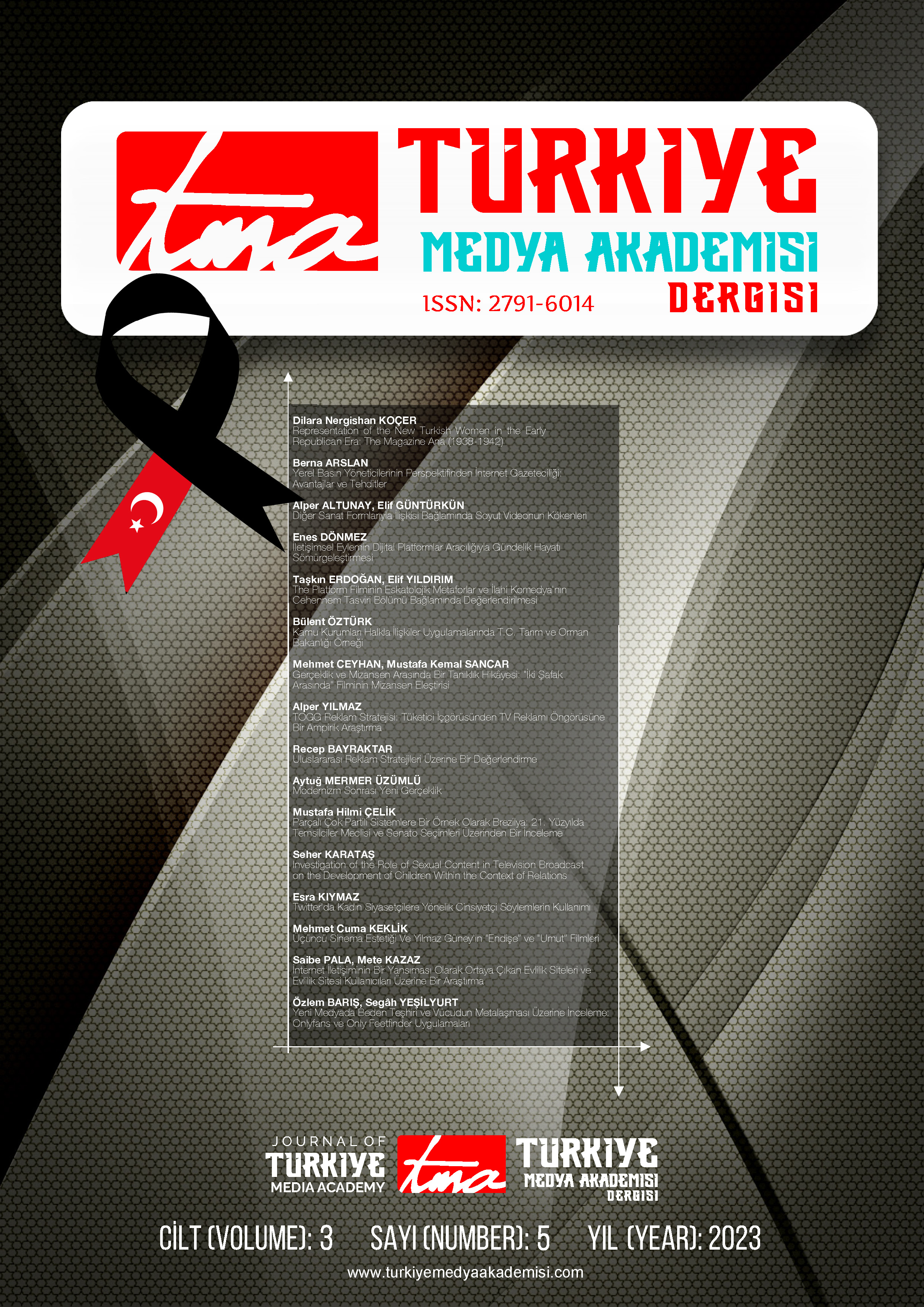INVESTIGATION OF THE ROLE OF SEXUAL CONTENT IN TELEVISION BROADCAST ON THE DEVELOPMENT OF CHILDREN WITHIN THE CONTEXT OF RELATIONS
DOI:
https://doi.org/10.5281/zenodo.7641561Anahtar Kelimeler:
Child, Adolescence, Media, Sex Education, TelevisionÖzet
In the current century, there is a close relationship between child development and mass media. One of the most effective of these tools for children is television. The role of television gains importance in the development of children born and raised in an environment where television is present. The main purpose of the study is to investigate the role of television on children and to reveal whether the sexual content in television broadcasts has an effect on the sexual development of children. For this purpose, 385 subjects selected from 4 different regions in Konya participate in the study. The obtained findings provide integrity with the data obtained from face-to -face interviews. Broadcasts with sexual content in television series can be a factor in stimulating sexual urges in children before normal, and in children's getting sexual information and starting earlier than normal. Children who watch television less than 1 hour on weekdays and 1-3 hours on weekends want to be in the place of TV series actors. While sexual content attracts the attention of children, it does not allow watching horror and thriller broadcasts. It is among the results found in both quantitative and qualitative data that families who encounter obscene broadcasts next to children panic, change the television channel instead of giving information about the visual that the child sees, and stimulate the child's curiosity about the content they watch.
İndir
Yayınlanmış
Sürüm
- 03/01/2023 (2)
- 02/28/2023 (1)
Nasıl Atıf Yapılır
Sayı
Bölüm
Lisans
Telif Hakkı (c) 2023 Türkiye Medya Akademisi Dergisi

Bu çalışma Creative Commons Attribution-ShareAlike 4.0 International License ile lisanslanmıştır.


